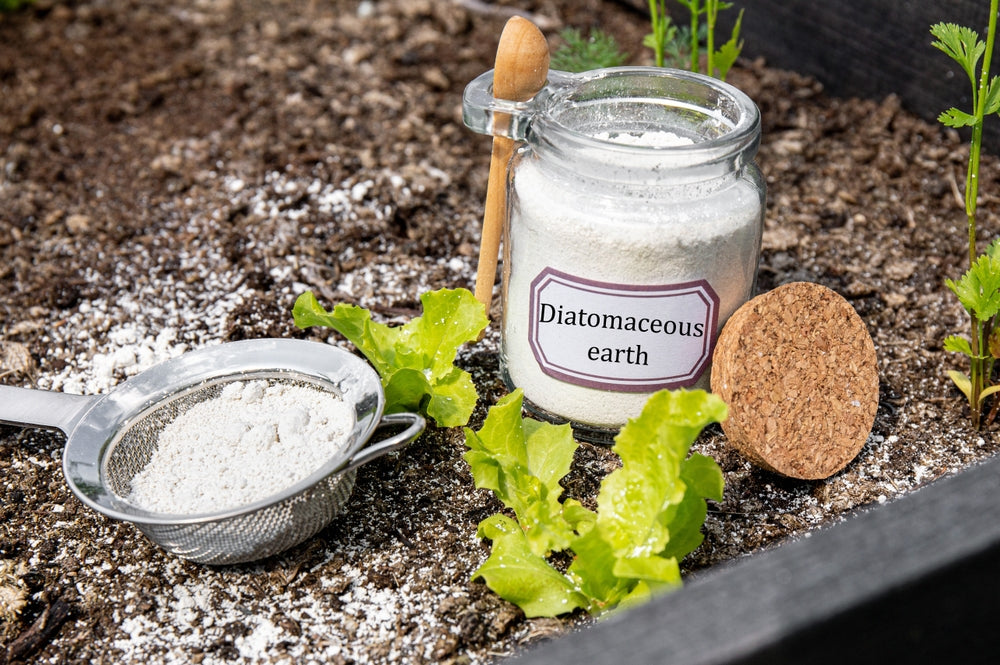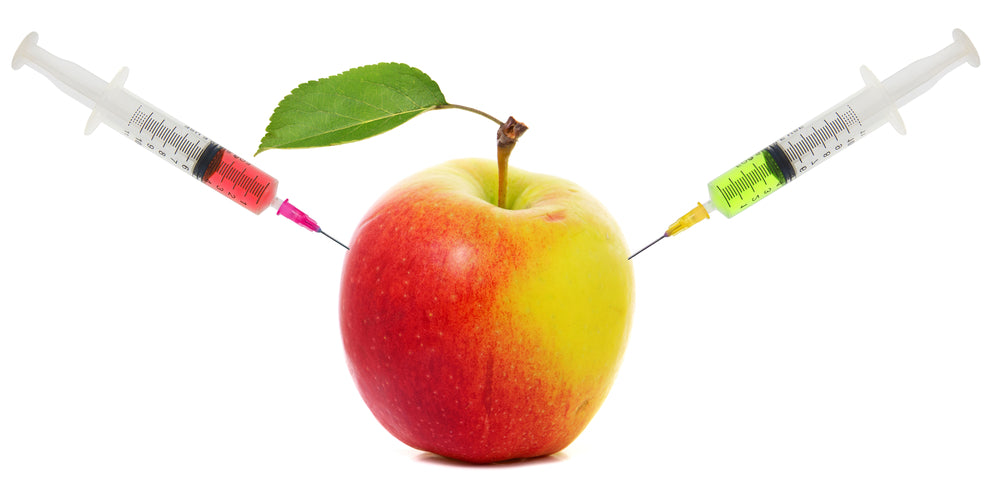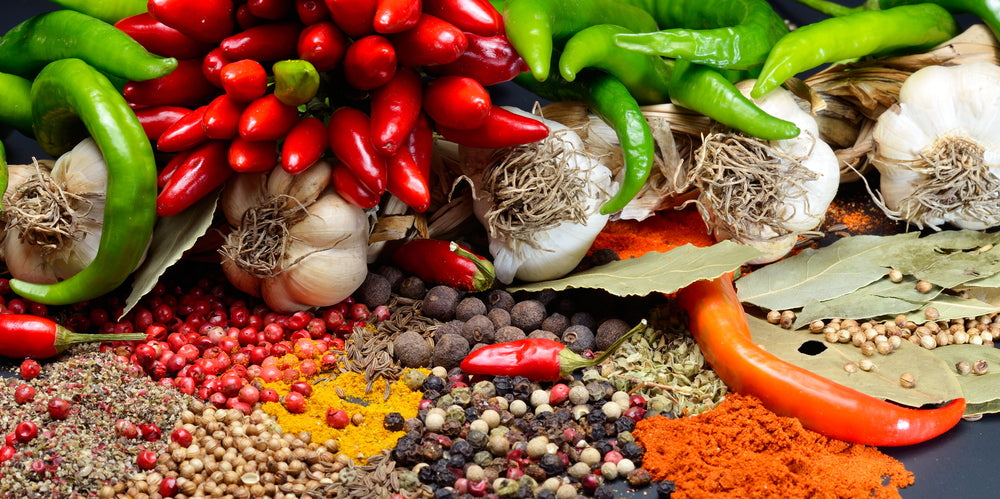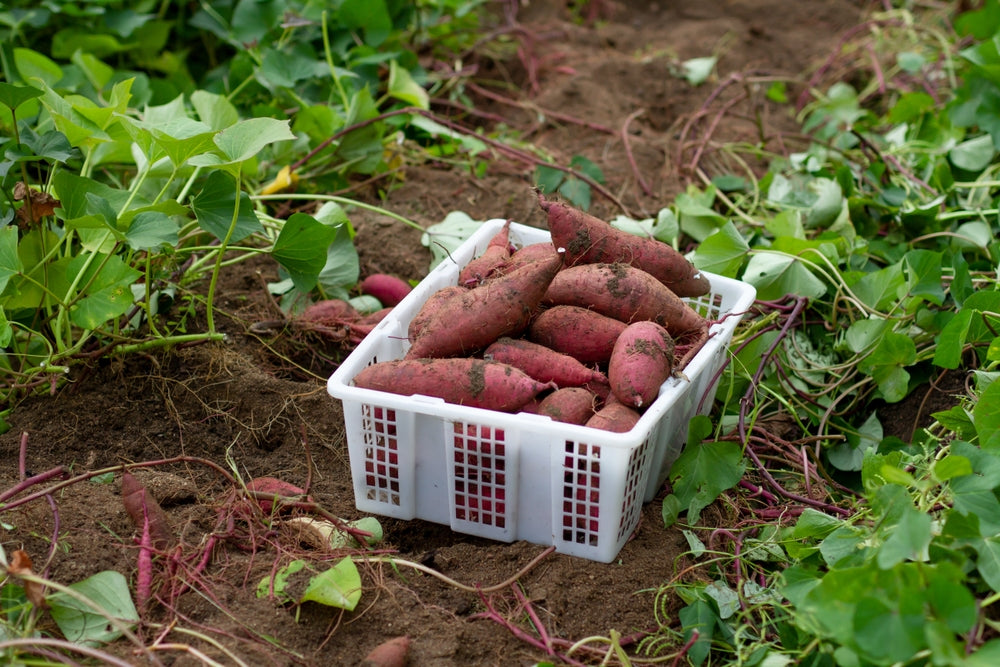

FREE SHIPPING AT $100
YOU'VE EARNED FREE SHIPPING!
FREE SHIPPING AT $100
YOU'VE EARNED FREE SHIPPING!
April 24, 2024 11 min read
In recent years, there has been a growing emphasis on the importance of consuming locally grown foods for both health and environmental reasons. This trend is particularly relevant to athletes and fitness enthusiasts, who often prioritize optimal nutrition to support their active lifestyles.
Eating locally grown foods, which are typically fresher and more nutrient-dense, can offer numerous benefits to individuals seeking to enhance their athletic performance and overall well-being.
Fruits and vegetables that are picked before they are fully ripe may not have developed their full nutrient content. Additionally, the prolonged storage and transportation process can further degrade their nutrient levels, and also cause a loss of flavor and texture.
Furthermore, consuming locally grown foods supports sustainable community supported agriculture practices, which can have positive implications for the environment and the local economy.
This article explores why locally grown foods are preferable over commercially produced products. We'll discuss how athletes and fitness enthusiasts can benefit from eating locally grown foods, highlighting how these foods can contribute to improved health, enhanced performance, and a greater sense of connection to the community.
By understanding the advantages of choosing locally sourced foods, individuals can make informed decisions about their diet that align with their fitness goals and contribute to a healthier, more sustainable future.

Peak athletic performance requires more than training and recovery. Athletes require significantly more energy than the average person. A key aspect to always having an edge over the competition is a comprehensive, nutrient rich diet, which can be enhanced by top quality supplements.
Locally grown organic, non-GMO foods are harvested at peak ripeness and do not undergo the prolonged transportation and storage that is common with many commercially produced foods. Instead, they are available at local markets within one or two days.
As a result, they retain higher levels of nutrients like vitamins, minerals, and antioxidants, which are essential for maintaining optimal health and supporting athletic performance.

The seasonal variety of locally grown food offers numerous benefits to athletes. Firstly, local foods are typically grown in season and naturally aligned with your bodies’ nutritional needs throughout the year. For example, citrus fruits are loaded with vitamin C and abundant in winter, providing the essential vitamin boost when you are most susceptible to illnesses during the cold season.
Furthermore, seasonal produce is often fresher and more nutrient-dense, as it is harvested at its peak and instead of spending days in transit and storage, it is offered to the local communities within hours or days.
This means athletes can enjoy fruits and vegetables that are rich in essential vitamins, minerals, and antioxidants, which are crucial for supporting overall health and athletic performance.
Moreover, seasonal organic foods are typically more flavorful and enjoyable, which can encourage athletes to consume a wider variety of nutritious foods.
Additionally, eating seasonally supports local farmers and promotes sustainable agricultural practices, which align with the values of many athletes who prioritize health and environmental sustainability.
Overall, incorporating a variety of seasonal produce into their diet can help athletes meet their nutritional needs, enhance their performance, and contribute to a healthier, more sustainable food system.
While organically grown fresh fruits and veggies are readily available at farmers’ markets, other highly perishable locally sourced food products are also available. If you know that your local grocery store sources fresh produce from local producers, feel free to support them.

Dairy products and eggs offer athletes and fitness enthusiasts a range of benefits, but because they are perishable, they are not typically available at farmers markets. However, early bird shoppers may be fortunate enough to pick up limited amounts of fresh milk, cream, yogurt, butter, eggs, and maybe a small selection of farm-fresh cheese.
These products are often produced using fresher ingredients, as they don't need to travel long distances to reach consumers. This freshness can translate to better flavor and higher nutrient content, providing athletes with the essential vitamins, minerals, and proteins needed for optimal performance.
Additionally, local dairy farms typically adhere to higher animal welfare standards and use fewer antibiotics and hormones, which can be important considerations for athletes looking to support sustainable and ethical food practices.
By choosing locally sourced dairy products, athletes can enjoy high-quality, nutritious foods while supporting local farmers and the environment.

Meat and poultry can also be a valuable addition to an athlete's diet.
Locally sourced meats are typically fresher and more flavorful, as they are processed and sold closer to the farm.
Local farms often prioritize animal welfare and sustainable farming practices, resulting in meat and poultry products that are of higher quality. Animals are not treated with hormones for mass-production.
Additionally, small-scale farmers are more likely to raise animals on pasture, resulting in meat that is leaner and higher in omega-3 fatty acids. By picking locally produced meat and poultry, athletes can support sustainable farming practices, enjoy superior-quality meats, and make choices that align with their values regarding animal welfare and environmental sustainability.

Locally sourced fish and seafood can be highly beneficial for athletes and fitness enthusiasts. Rich in high-quality protein, they are ideal for muscle repair and growth, making them excellent post-workout meal choices.
Fatty fish like salmon, trout, and mackerel are also abundant in omega-3 fatty acids, which aid in reducing inflammation and promote heart health and aid in muscle recovery.
Additionally, fish and seafood are dense in essential nutrients such as vitamins D and B12, iodine, selenium, and zinc, all crucial for overall health and athletic performance. Being low in calories and saturated fats, they are a healthy protein option for those looking to manage their weight without compromising muscle mass.
Furthermore, opting for buying locally sourced fish and seafood from local businesses supports sustainability, as they often require less transportation and are caught using environmentally friendly methods.
Incorporating locally sourced fish and seafood into their diet can help athletes and fitness enthusiasts meet their nutritional needs, support their overall health, and enhance their performance and recovery.

Eating locally grown food can promote mental health in several ways.
Nutrient Density: Locally grown foods are often fresher and more nutrient-dense, containing higher levels of vitamins, minerals, and antioxidants. These nutrients are important for brain health and function, and deficiencies in certain nutrients, like folate and vitamin B12, have been linked to mental health disorders such as depression and anxiety.
Microbiome Health: Locally sourced foods are more likely to be grown using sustainable and organic practices, which can help support a healthy gut microbiome. Emerging research suggests that the gut microbiome plays a role in mental health, and a healthy microbiome is associated with lower rates of depression and anxiety.
Community Connection: Buying locally can foster a sense of community and connection to the people who grow your food. This social connection is significant for mental health and can provide a sense of belonging and support.
Environmental Benefits: Eating locally reduces the carbon footprint associated with food production and transportation, which can help reduce anxiety and feelings of eco-guilt related to climate change.
Seasonal Eating: Eating foods that are in season can help you feel more connected to the natural world and can provide a sense of rhythm and balance to your diet, which can positively impact mental well-being.
Overall, eating locally produced food can be a holistic way to support your mental health, by providing nourishment for both your body and your mind.

Eating locally produced food can potentially help with weight management. Locally sourced foods, especially fruits, vegetables, and lean proteins, are often fresher and more nutrient-dense than their commercially produced counterparts.
They tend to be lower in unhealthy fats, sugars, and preservatives, which can contribute to weight gain.
Additionally, eating locally can promote a diet rich in whole foods, which are generally lower in calories and higher in fiber, and fruits like watermelons can help to promote satiety and prevent overeating.
Supporting local farmers and choosing seasonal produce can also encourage a diverse diet, which is important for overall health and weight management.

Sourcing locally grown food can have a positive environmental impact in several ways. One of the key benefits is a reduction in carbon emissions associated with transportation.
Locally sourced food typically travels shorter distances from farm to table, reducing the amount of fuel used for transportation and lowering greenhouse gas emissions.
Local farmers often avoid the use of harmful chemicals to maintain soil integrity and produce quality. Additionally, local farmers usually use more sustainable farming practices, such as crop rotation and reduced pesticide use, which can help protect the environment and promote biodiversity.
Supporting local agriculture also helps preserve farmland and green spaces, reducing the pressure for urban sprawl and development. Overall, sourcing locally grown food can help reduce the environmental footprint of our food system and support a more sustainable future.

Small-scale farmers typically use fewer pesticides and chemicals than commercial farms, which can have numerous benefits for both the environment and human health.
Because small-scale farms often focus on diverse crops and sustainable farming practices, they are less reliant on chemical inputs to control pests and diseases. This reduces the amount of harmful chemicals released into the environment and minimizes the risk of pesticide residues in food.
Additionally, small-scale farmers are more likely to use organic and natural methods of pest control, such as crop rotation, companion planting, and the use of beneficial insects, which can help maintain a healthy ecosystem and promote biodiversity.
Overall, supporting small-scale farmers can contribute to a more sustainable and environmentally friendly food system.

Ethylene is a naturally occurring plant hormone that plays a crucial role in the ripening of fruit and vegetables. It is produced by fruits, particularly during the ripening process. when it acts as a signaling molecule that triggers a series of biochemical and physiological changes in the fruit.
These changes include the conversion of starches to sugars, the softening of the fruit's flesh, changes in color, and the development of characteristic flavors and aromas. Ethylene also plays a role in the breakdown of cell walls, which contributes to the softening of the fruit.
In commercial agriculture, unripe produce is harvested and stored. Ethylene is sometimes sprayed onto the fruit at a later stage to accelerate the ripening process and ensure that fruits are ready for market in a timely manner.
However, this is not the only method commercial farmers use to slow the ripening process. Several genetic modifications are available to control ethylene production in the plants, or to control the plant's ethylene perception.
This process of artificial ripening does not allow the natural processes that make fresh produce healthy to occur. An example is tomatoes that take between 45 and 55 days to reach maturity, during which time ethylene triggers different enzymes that cause physiological changes that include changing the color and developing a distinct taste and aroma.
Applying ethylene to unripe tomatoes makes them change color and become soft at an increased rate, skipping all the stages of nutrition and taste development.
Regardless of where you find yourself in the United States, eating locally grown foods can support local sources and the economy and provide you with delicious, fresh, and nutritious options for your meals. Here are just some of the locally grown foods available across the country.
The mild, wet climate of the Pacific Northwest of the United States brings a host of locally grown foods to the table.
You'll be spoiled for choice with different varieties of apples and pears, strawberries, blueberries, raspberries, and black berries. Berries contain polyphenols like vitamin C, which is immune-boosting, and helps reduce inflammation and muscle soreness.

Additionally, the Alaskan waters off the coast of the Pacific Northwest boast an abundance of salmon, packed with Omega-3, and over 500 species of iodine-rich seaweed that regulates the thyroid hormone production, essential in energy production.
The Pacific Northwest is also known for its wild mushrooms, including chanterelles, morels, and porcini mushrooms, and leafy greens like kale, chard, and spinach. And if you find yourself in Oregon, be sure to grab some locally grown hazelnuts.
In the Southwest region of the United States, you can find a variety of fresh, locally grown foods at farm stands, especially during the growing season.
Some common locally grown foods in the Southwest include chilies (a proven metabolism booster), corn, and vitamin C-rich prickly pear. Furthermore, endurance athletes can benefit from piñon nuts, chia seeds, amaranth, and protein-rich black beans and pinto beans.

Other locally grown produce in the southwest include summer and winter squash, tomatoes, watermelons, and cantaloupes. Some parts like Arizona and Southern California produce flavorful and juice oranges, lemons and grapefruit. The warm, sunny climate of the southwest is also ideal for growing herbs, including cilantro, oregano, and thyme.
The Midwest has a humid continental climate with four distinct seasons. Locally grown fresh produce is abundant but seasonal.
Spring: Peppers, asparagus, beets, carrots, leafy greens, squash, cabbage, corn, okra, green beans, eggplant, potatoes, tomatoes, cantaloupe, watermelon, peaches, and berries
Summer: Apples, berries (blueberries, raspberries, strawberries), grapes, and melons (cantaloupe)
Fall: Apples, pears, tomatoes, pecans, pumpkins, and ornamentals
Winter: Citrus (clementines, grapefruit, lemons, limes, oranges, tangerines), kiwi, pear, and pineapple

Furthermore, the proximity to the Great Lakes brings an endless supply of trout, loaded with vitamin D and Omega-3. and also protein-packed wild rice, which is ideal for building lean muscle mass. Wild rice is native to Minnesota and the upper Midwest, and has been harvested from the region's lakes for more than 2,000 years.
In the warm, humid climate of the South and Southeast regions of the United States, you can find a variety of fresh, locally grown foods.

The South is known for its sweet potatoes, which are rich in vitamins and minerals, including beta-carotene. Fresh and nutritious greens like collard greens, turnip greens, and mustard greens are also abundant in the South.
Other fresh locally grown produce includes juicy citrus fruits, sweet and juicy watermelons, tomatoes, and okra.
Furthermore, pecan trees are native to the South, and the region produces a large percentage of the pecans grown in the United States, and the Southeast is home to a variety of fresh seafood, including shrimp, crab, and fish like grouper and snapper.
The East Coast is home to some of the best seafood in the world, including lobster, oysters, clams, and fish like cod and haddock. These seafoods provide nutrients such as selenium and lean protein that promotes cognitive functions and boosts the immune system.

Furthermore, New England is known for its apple orchards, and several varieties of apples are grown in the region, as well as sweet and flavorful strawberries, blueberries, raspberries, and blackberries. Berries are rich in Anthocyanin, a valuable antioxidant.
The maple trees in New England are the source of the sweetest maple syrup, and Massachusetts is known for growing the best cranberries. The cool, moist climate of the East Coast is ideal for growing leafy greens like kale, spinach, and lettuce, and the pumpkin patches of New England attract families in the fall.
Finally, the East Coast is home to many dairy farms, and fresh, locally produced dairy products like milk, cheese, and yogurt are widely available. These products are often produced using sustainable and humane practices.

These are just a few examples of the fresh, locally grown foods you can find across the regions of the United States. Eating locally grown foods can support local farmers and the economy and provide you with organic sources of all the essential nutrients athletes and fitness enthusiasts need for peak performance.
In conclusion, eating locally grown foods offers numerous benefits for athletes and fitness enthusiasts. Locally sourced foods are often fresher, more nutrient-dense, and free from harmful additives, making them ideal for supporting optimal health and performance.
Additionally, supporting local growers, promotes sustainable agricultural practices, and fosters a sense of community connection.
By incorporating a variety of locally sourced fruits, vegetables, dairy products, and meats into their diet, athletes can enhance their physical performance and contribute to a healthier, more sustainable food system for future generations.
